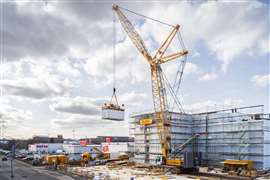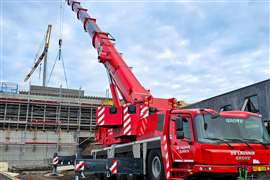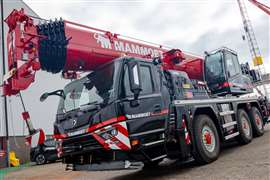Golden days
18 April 2008
The Interstate Highway System, sometimes called the greatest public works project in history, turned 50 on June 29. Without a formal ceremony, official statement or celebratory photo, President Dwight D Eisenhower approved the Federal-Aid Highway Act in 1956, providing the impetus for establishment of the Interstate Highway System.
The bill was among a stack he signed his last day at Walter Reed Army Medical Center after surgery on June 7. Despite the lack of fanfare, Eisenhower probably put as much of himself into that bill as any he ever signed, and he considered it one of his most significant achievements as President.
He first truly understood the country's need for better roads as a young Lieutenant Colonel in 1919, when he participated in the U.S. Army's first transcontinental convoy. That two-month journey from Washington, D.C. to San Francisco, CA included military personnel, road advocates and members of the press.
His travels on Germany's Reichautobahnen network of rural superhighways during and after World War II left a lasting impression. “The old convoy had started me thinking about good, two-lane highways, but Germany had made me see the wisdom of broader ribbons across the land,” he said.
Although President Eisenhower's strong support led to the enactment of legislation that made the interstate system a reality, the concept dated back to studies in the late 1930s and early 1940s. Indeed, the Federal-Aid Highway Act of 1944 authorized a 40,000-mile “National System of Interstate Highways.” Routes were designated in 1947 and 1955, but the absence of a federal financial commitment stymied progress.
Highway Trust Fund
The dilemma of paying for this extensive system was resolved with the decision to use the Social Security Trust Fund as a model for the Highway Trust Fund. Revenue from taxes on highway user products would be credited to the highway fund for use exclusively on the interstate system and other Federal-aid highway and bridge projects.
Eisenhower also recognized early on that, to be successful, the interstate system would require each level of government – federal, state, county, and municipal – to contribute to upgrading the nation#180;s entire road network over 10 years.
The goal was “a properly articulated system that solves the problems of speedy, safe, transcontinental travel.” The benefits would be improved safety, reduced traffic jams, less traffic-related litigation, increased economic efficiency, and elimination of “the appalling inadequacies to meet the demands of catastrophe or defense should an atomic war come.”
Today, the system, officially named in 1990 the Dwight D Eisenhower National System of Interstate and Defense Highways, has become part of the American way of life. Although the 46,876-mile system represents only about 3% of the nation's total road mileage, it carries more than 24% of the nation's roadway traffic. It includes about 15,000 interchanges, more than 55,500 bridges and 82 tunnels.
“While SC & RA is pleased to participate in the celebration of our Interstate Highway System's 50th anniversary, we also welcome the opportunity to re-examine whether it continues to yield its intended benefits – and whether these benefits are likely to erode in the future without significant improvements,“ said SC&RA executive vice president Joel Dandrea. “Evidence clearly indicates that our nation has outgrown the system as envisioned by President Eisenhower.”
According to TRIP, a national nonprofit transportation research nonprofit transportation research group:
•Travel on the nation's interstate highways is increasing at a rate eight times faster than additional miles are being added.
•Over 40% of the urban interstates and 10% of the rural interstates are considered congested.
•About 17% of interstate pavements are in poor or mediocre condition.
•The estimated spending on interstate repairs and improvements in 2006 is 82% of the level needed to maintain current physical conditions on highways and bridges and maintain traffic congestion at its current level.
•The estimated spending on interstate repairs and improvements in 2006 is about half the level needed to make significant improvements in the physical condition of interstate bridges and highways and to reduce current interstate traffic congestion levels.
To help promote infrastructure improvements, SC & RA participates in ongoing programs with organizations such as the American Trucking Associations, Americans for Transportation Mobility, the U.S. Chambers of Commerce, the Commercial Vehicle Safety Alliance, and the American Association of State Highway and Transportation Officials. SC & RA also conducts the Annual Specialized Transportation Symposium, which gives members an outstanding opportunity to exchange information with state, regional and federal transportation officials concerning ways to make cost-effective improvements to the nation's most critical transportation link.
“A healthy interstate highway system is vital to all of our members,” said Dandrea. “It has provided tremendous safety, time and economic benefits for our Transportation Group members. Beyond that, the Crane & Rigging Group, the Allied Industries Group and the Transportation Group have all played a major role in the building and maintenance of the interstates. We will never stop advocating continued infrastructure enhancements.
STAY CONNECTED


Receive the information you need when you need it through our world-leading magazines, newsletters and daily briefings.
CONNECT WITH THE TEAM











